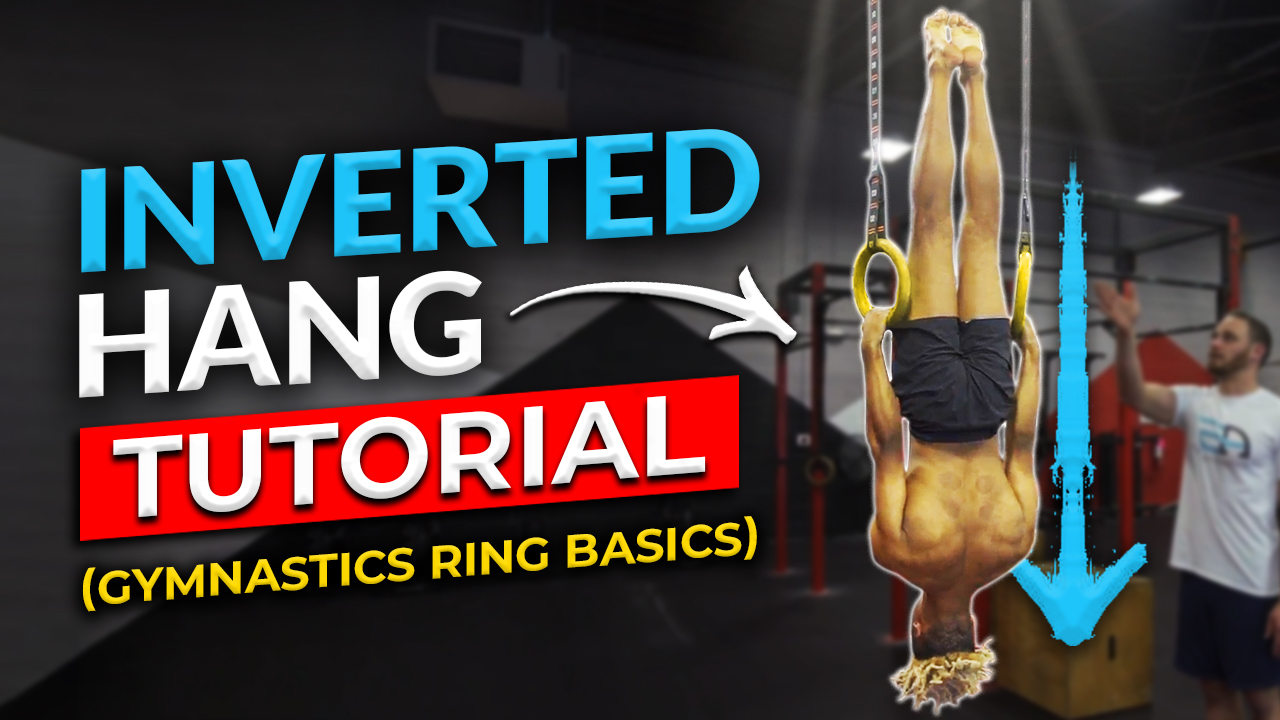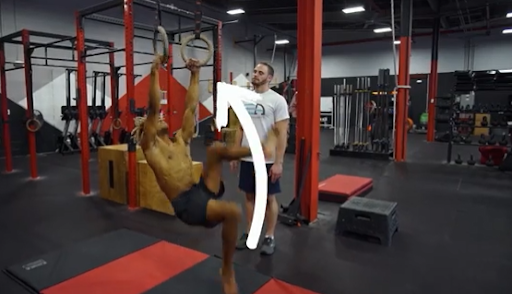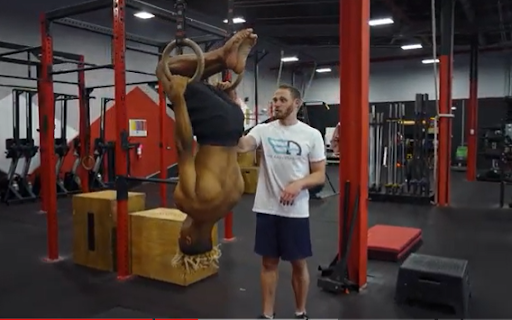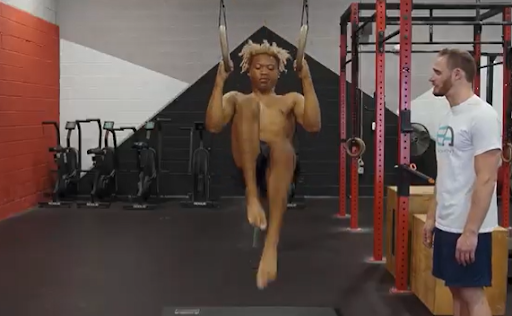Ever wondered how an upside-down position, seemingly defying the laws of physics, lays the groundwork for achieving unparalleled body control and strength?💪💪
The inverted hang may initially seem intimidating, an upside-down position where gravity seems to shift. Still, it’s an essential precursor to more advanced maneuvers in calisthenics, especially the revered back lever.
👊This move demands strength and a nuanced understanding of orientation and body control.
Let’s delve into mastering the inverted hang and how it sets the stage for back-lever mastery.👇👇
What is an Inverted Hand?
👉The inverted hang is an exercise or position in calisthenics and gymnastics where you suspend your body upside down from a bar or rings, holding on with your hands while your body remains straight or slightly arched.
It involves gripping the bar or rings and lifting your body until your feet are above your head, reversing the usual gravitational pull. It’s a fundamental skill in bodyweight training that requires strength, core stability, and body awareness.
👉The inverted hang position is a stepping stone toward mastering more advanced moves like the 📍back lever and helps develop upper body and core strength.
🤔How to Do It?
1. ✊ Preparation: Ensure you have low rings and a mat beneath you for safety. Being upside down can feel disorienting, so familiarize yourself with this position.
2. ✊ Starting Position: Begin by hanging upside down from the rings, with your body in a tucked position and the mat underneath for support.
3. ✊ Grip Strength: Check that you have enough grip strength to maintain this position, as it serves as the foundation for the back lever.
4. ✊ Execution: Straighten your body out, extending from the tucked position, and adjust your head position while keeping your legs positioned between the cables.
5. ✊ Stability: Aim to stay still, comfortable, and maintain a straight body position during the inverted hang. The goal is to hold this position for about 15 seconds.
6. ✊ Exit: To exit the inverted hang, reverse the movements made to get into the position. You may need to perform a tuck or pull-up to come back out.
7. ✊ Warning Signs: If you find yourself shaky, unable to maintain a straight body, or lacking sufficient grip strength, it’s crucial to reconsider attempting the back lever. It might be necessary to take a break or seek guidance and support, possibly with low rings or assistance from a spotter, before progressing further.
💥 Check out this video showing how to do the inverted hang: 🎥How to Get into Inverted Hang (Back Lever Prerequisite)
😱Why You Should Learn the Inverted Hang?
Learning the inverted hang holds significant value in calisthenics for several compelling reasons.
🏆 Comfort and Orientation
Firstly, it allows you to become comfortable with an upside-down orientation. This might seem trivial, but understanding and adapting to this position is crucial, as it can initially feel disorienting.
By gradually familiarizing yourself with the inverted hang, you’re essentially training your body to feel at ease in a position that challenges your usual perception of up and down. This comfort is essential not only for executing advanced moves like the back lever but also for overall body awareness and control.
🏆 Grip Strength Development
Secondly, mastering the inverted hang is instrumental in developing adequate 📍grip strength. Hanging upside down demands a robust grip, as you’re essentially supporting your body weight while inverted.
This exercise effectively strengthens the muscles in your hands, wrists, and forearms, preparing them for more advanced maneuvers like the back lever. Without sufficient grip strength, attempting moves like the back lever could lead to instability or potential injuries.
🏆 Foundation for Advanced Techniques
Moreover, the inverted hang serves as a foundational skill for progressing to more complex exercises, particularly the 📍back lever. It’s often considered the starting point for mastering the back lever due to the similarities in body orientation and muscle engagement.
By honing your technique in the inverted hang, you lay the groundwork for tackling the back lever with better body control, strength, and confidence.
🧐Inverted Hang on the Bar vs. Rings
Choosing between a bar and rings for the inverted hang often depends on personal preference and training goals, each offering distinct advantages and challenges.
A notable distinction lies in the difficulty between performing the inverted hang on a bar versus vs. on rings. The bar demands a different level of muscle engagement, with the body tipping past a point of equilibrium, making it notably more challenging than the ring variation.
⚡️Bar for Inverted Hang
- Stability: Bars provide a stable, fixed grip, offering a sense of security for beginners. The fixed nature of the bar can assist in developing initial strength and confidence.
- Limited Range of Motion: While bars offer stability, they restrict the range of motion compared to rings. This can make it easier to control the movement initially, but it may limit the development of full-body control.
- Ease of Progression: Bars typically allow for easier progression in terms of incremental skill development. Advancing from a simple hang to an inverted hang and then to more advanced moves can be easier to track and accomplish on a bar.
⚡️Rings for Inverted Hang
- Unstable Challenge: Rings offer instability, demanding greater control and stabilization. This instability engages more muscles, enhancing overall body control and coordination.
- Enhanced Range of Motion: Rings allow for a wider range of motion, enabling a fuller extension of the shoulders and greater freedom of movement. This can lead to more comprehensive strength development.
- Versatility: Rings offer versatility in movement and progression. They allow for a seamless transition between various exercises and positions, providing a dynamic training experience.
⚡️Factors to Consider
- ✅ Skill Level: Beginners might find bars more approachable due to their stability, while those seeking a more comprehensive challenge might prefer the instability of rings.
- ✅ Training Goals: If the goal is to build foundational strength and gradually progress, starting with a bar might be beneficial. For those looking to enhance overall body control and take on more challenging maneuvers, rings can offer a more comprehensive workout.
- ✅ Preference: Personal preference plays a significant role. Some individuals may feel more comfortable and confident on bars, appreciating the stability, while others enjoy the dynamic and versatile nature of rings.
Ultimately, the bar and rings are effective tools for training the inverted hang, each presenting unique challenges and benefits. Experimenting with both can provide a well-rounded approach to skill development and strength training in calisthenics.
🧐Frequently Asked Questions
🔎Are there variations of the inverted hang?
Yes, there are variations, such as tucking the body closer for beginners, experimenting with foot placements for stability, or performing the inverted hang on different apparatus like rings or a bar.
🔎How long should I hold an inverted hang?
Beginners aim for shorter durations, gradually working up to 15 seconds or more. Duration may vary based on individual strength and skill level.
🔎Is the inverted hang safe for beginners?
When performed with proper equipment and technique, the inverted hang is generally safe. Beginners should start with low rings, use mats for protection, and consider seeking guidance from a qualified trainer.
🔎Can the inverted hang be progressed to more advanced moves?
Absolutely! Mastering the inverted hang is a stepping stone to advanced maneuvers like the back lever, front lever, or other challenging inverted exercises in calisthenics.
🔎How often should I practice the inverted hang?
Frequency depends on individual fitness levels. Beginners might start with 2-3 times a week, gradually increasing frequency as they become more comfortable and proficient.
🔎What if I feel dizzy or uncomfortable during the inverted hang?
It’s normal initially to experience discomfort or disorientation. Start with shorter holds, take breaks, and gradually build endurance. If dizziness persists, consult a fitness professional.
📌Conclusion
The inverted hang is more than just an intermediate step; it’s a fundamental skill in the repertoire of calisthenics. It builds physical strength and control and rewires your sense of orientation, preparing you for the challenges ahead, especially the elusive back lever. So, start with the inverted hang, master it, and embark on your journey to calisthenics mastery!
The inverted hang—where being upside down is the new right side up!
If you’re aspiring to master the challenging back lever in calisthenics, a complete calisthenics fitness assessment becomes your guiding compass.











